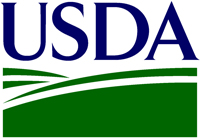 Data from the 2013-2014 school year for the USDA’s Farm to School Grant Program has been released. The results show that a strong farm to school program encourages students to purchase breakfast and lunch at school, increases students positive food choices, and reduces waste. The census also showed a 55 percent increase in the amount of food purchased locally by school districts from 2011-2012, up to nearly $600 million last school year.
Data from the 2013-2014 school year for the USDA’s Farm to School Grant Program has been released. The results show that a strong farm to school program encourages students to purchase breakfast and lunch at school, increases students positive food choices, and reduces waste. The census also showed a 55 percent increase in the amount of food purchased locally by school districts from 2011-2012, up to nearly $600 million last school year.
The results are an outcome of efforts by the U.S. Department of Agriculture, under Secretary Vilsack’s leadership, to target resources to help schools serve healthier meals to students following the passage of the bipartisan Healthy, Hunger-Free Kids Act of 2010. Through its Farm to School Grant Program, established and funded through the Act, USDA offers grants to help schools and other eligible entities establish or expand farm to school programs. In September 2015, USDA released a report that shows that the grants alone have helped 12,300 schools improve nutritious meal options made with local ingredients for 6.9 million students, while expanding market opportunities for family farmers and ranchers in their communities.
“Farm to school is one of many tactics and resources that USDA makes available to help schools successfully serve healthier meals to kids. Farm to school partnerships have a proven track record of encouraging kids to try, like and eat more healthy foods and creating new market opportunities for the farmers that grow them,” said Vilsack. “Congress should act quickly to reauthorize the Healthy, Hunger-Free Kids Act to build on the success of farm to school and the healthier school meals and continue our momentum towards a healthier next generation of Americans.”
With program trends up and continuing to grow, the school districts provide farmers with a business opportunity. It also encourages a link between the farm and classroom with hands-on activities and field trips. Independent research and testimony from school personnel show these interactions improve a student’s healthy eating habits, specifically the consumption of more fruits and vegetables and less plate waste.

